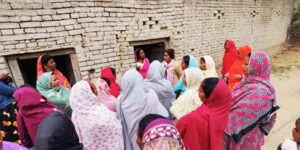India’s agro-ecological diversity is shaped by various factors, yet human activities such as extractive industries and government policies have led to environmental degradation and rural distress. While movements like organic farming and water conservation have made progress, systemic interventions remain crucial. PEACE works in Uttar Pradesh, Odisha, and Jharkhand, engaging local communities to create resource maps and livelihood plans, emphasizing resilient livelihoods and food sovereignty through community-driven decision-making. Success is assessed based on village-level plans and long-term commitments, with the model designed for replication in other regions.

For 15 years, PEACE has worked with community-based organisations to conserve natural resources, recognising their direct link to local livelihoods and indigenous knowledge. Since 2017, we have supported communities through resource mapping and planning. In collaboration with the Vagad Mazdoor Kisan Sangathan, we strengthened Village Development Committees (VDCs) in 195 villages across Rajasthan. We also conducted participatory resource mapping and facilitated planning across 62 Gram Panchayats, addressing market-driven agriculture’s negative effects on local food systems.
As market-driven agriculture and corporate control over farming have displaced traditional knowledge, degraded soil, and weakened local food systems, PEACE extended its efforts in 2023 to Uttar Pradesh, Jharkhand, and Odisha. Baseline studies were conducted in 30 villages in Uttar Pradesh (Raipura, Karwi), Jharkhand (Torpa, Khunti), and Odisha (Thamaram Pur, Kalahandi), focusing on:
- Baseline Documentation: Mapping local crops, studying markets, and documenting gaps in resource utilisation.
- Resource Mapping Workshops: Identifying sustainable resource management strategies and fostering collective ownership.
- Strengthening Local Capacity: Engaging grassroots organisations to ensure community-driven solutions and long-term sustainability.
These initiatives addressed stagnation, limited participation, and local inaction within Jan Sangathans by reinforcing their role in resource management and economic revival. Through fieldwork and dialogue, PEACE laid the foundation for sustainable change, ensuring that the efforts are community-driven and tailored to local contexts.
